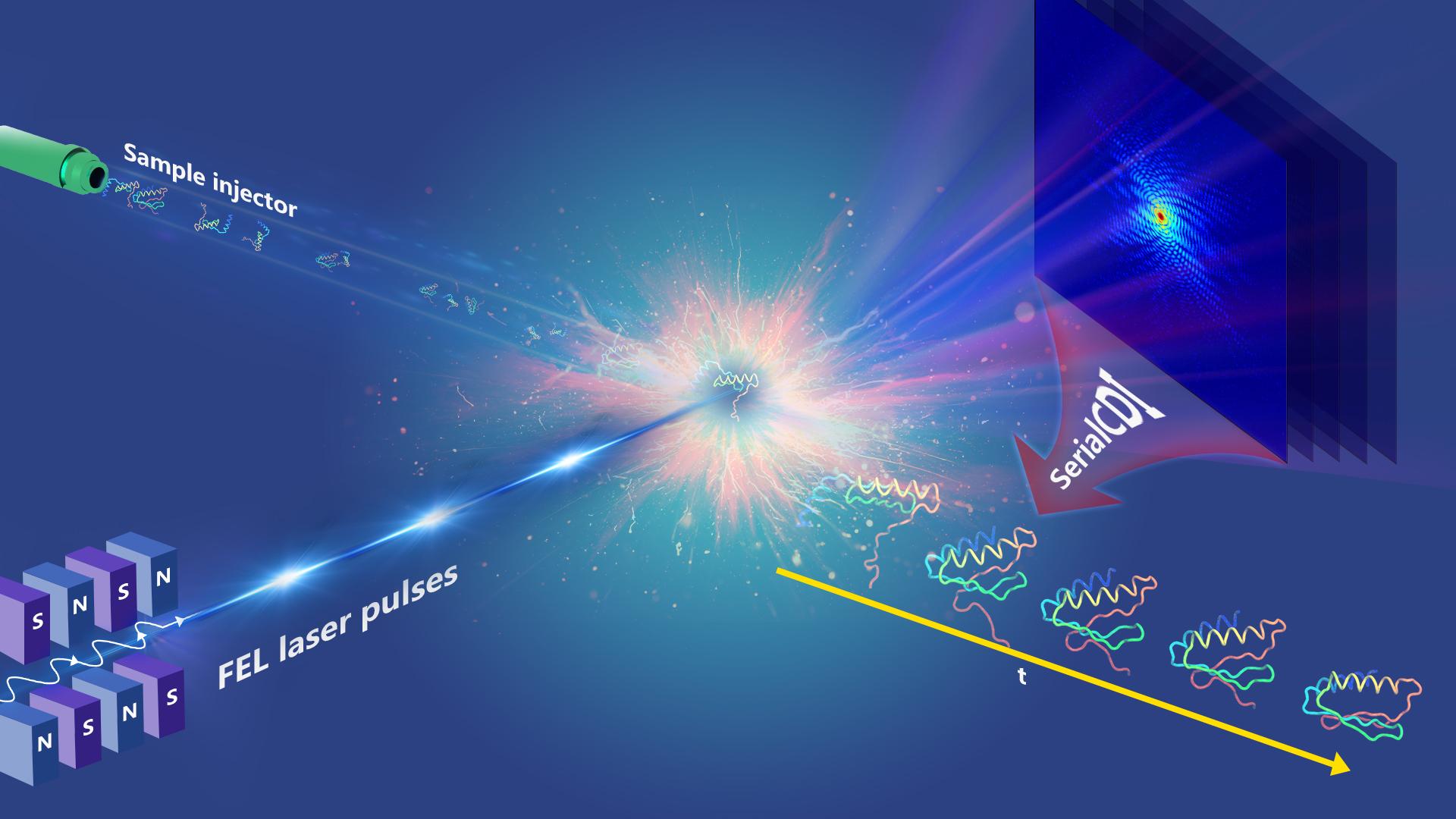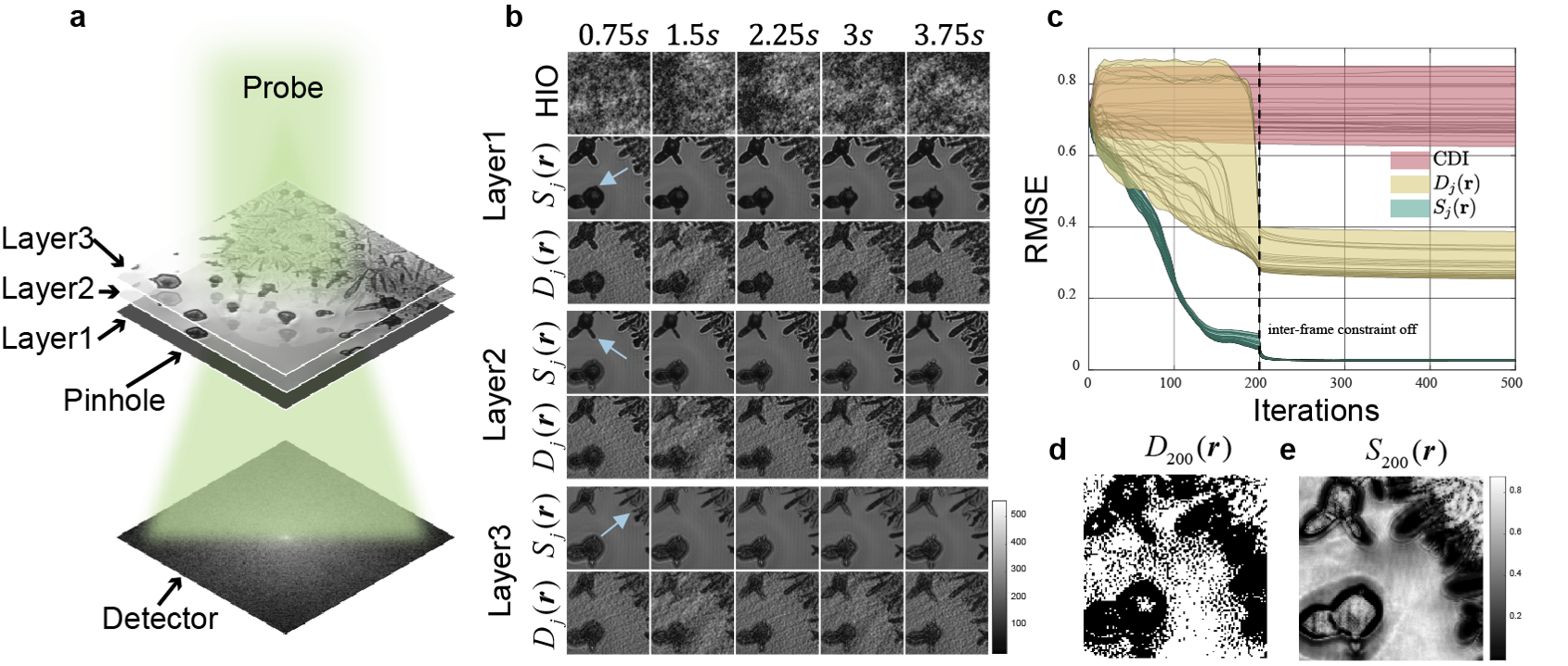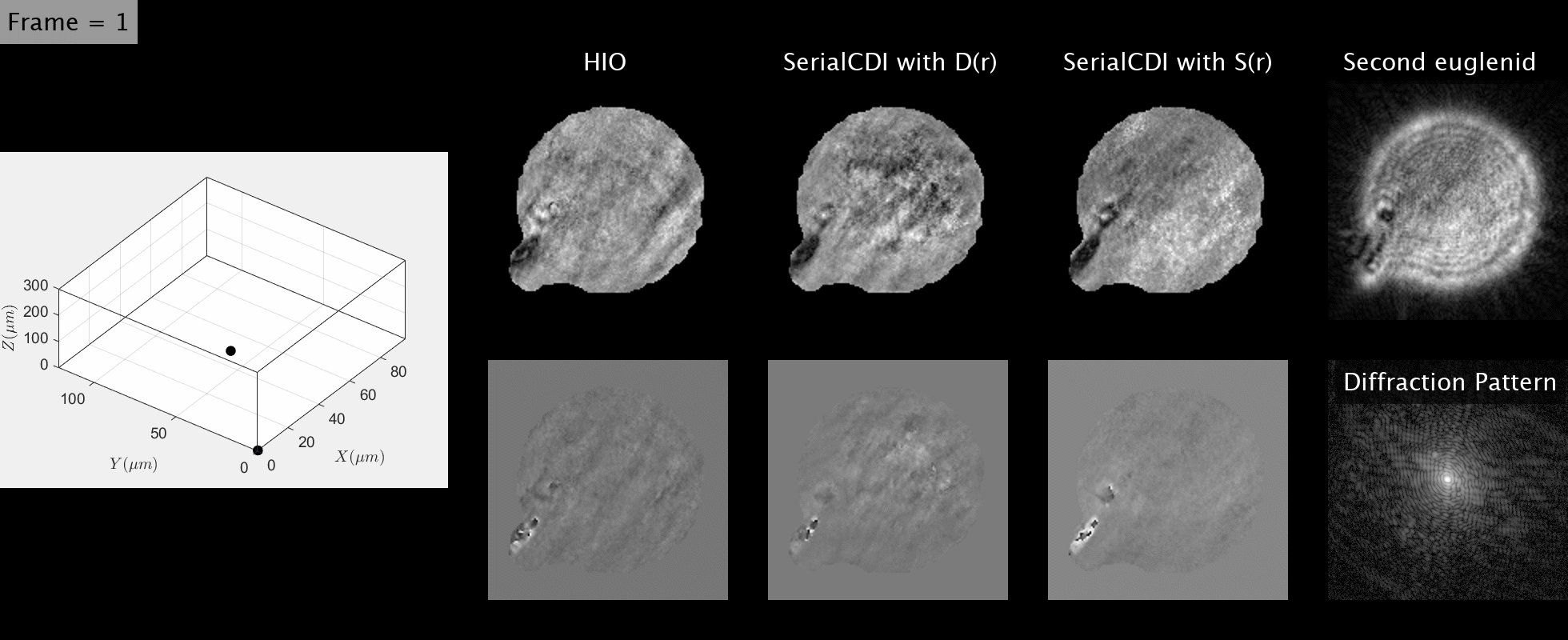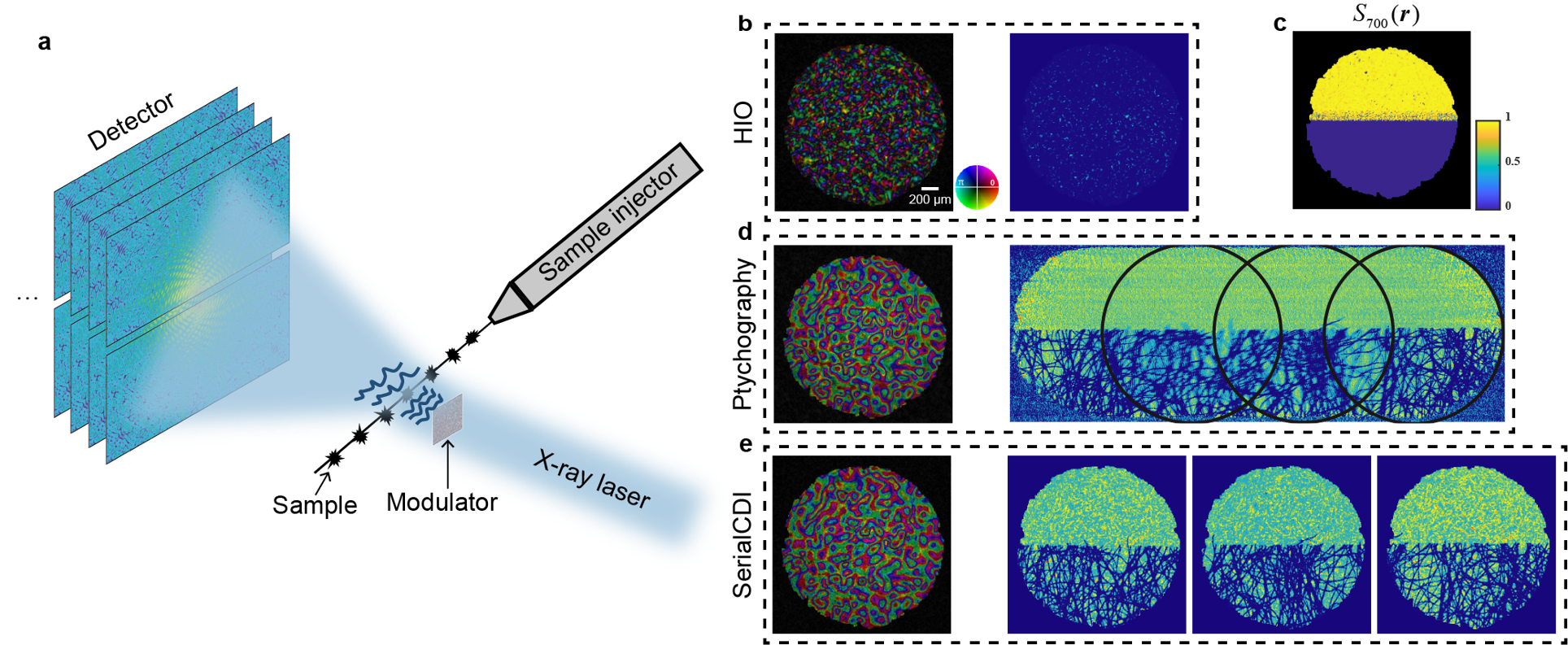Coherent diffraction imaging (CDI) has garnered wide attention in recent years due to its lensless setup and nanometer-scale resolution, particularly in advanced light sources such as synchrotron radiation and free-electron lasers. However, conventional CDI techniques face substantial limitations when applied to dynamic samples, often suffering from poor reconstruction stability and convergence.

A research team led by Associate Professor Fucai Zhang from the Department of Electronic and Electrical Engineering at the Southern University of Science and Technology (SUSTech) has made significant progress in the field of CDI The team proposed a novel method for serial CDI of dynamic samples based on inter-frame continuity, referred to as serialCDI.
Their work, titled “Serial coherent diffraction imaging of dynamic samples based on inter-frame continuity,” has been published in Light: Science & Applications, a top-tier journal in optics.

Figure 1. SerialCDI dynamic imaging of thick crystal growth
This study is the first to introduce inter-frame continuity as a reconstruction constraint, establishing a general algorithmic framework—serialCDI—that significantly enhances imaging capability for dynamic samples.

GIF 1. Tracking the 3D swimming motion of Euglena using SerialCDI
The core innovation of the serialCDI approach lies in the adaptive similarity matrix used to analyze local structural continuity across frames. This allows for high-quality reconstruction of dynamic processes without requiring prior calibration of static regions. Compared to existing methods such as coherent modulation imaging and low-rank phase retrieval, serialCDI offers improved robustness against noise and missing data without introducing complex system modifications, making it highly generalizable and scalable.

Figure 2. Comparison between SerialCDI and ptychographic CDI reconstructions
The effectiveness of serialCDI was validated through both simulated crystal growth and experimentally acquired data of Euglena motion. Furthermore, in a simulated X-ray free-electron laser (XFEL) scenario, serialCDI demonstrated excellent reconstruction performance, suggesting promising potential for applications in femtosecond-resolved dynamic imaging.
Master’s student Pengju Sheng is the first author of the paper, and Associate Professor Fucai Zhang is the corresponding author.
Paper link: https://www.nature.com/articles/s41377-025-01860-8
To read all stories about SUSTech science, subscribe to the monthly SUSTech Newsletter.
Proofread ByAdrian Cremin, Yifei REN
Photo ByDepartment of Electronic and Electrical Engineering